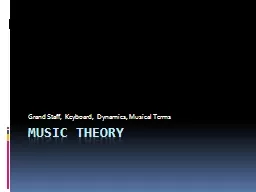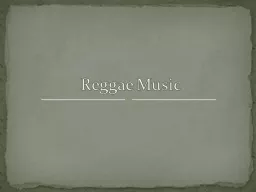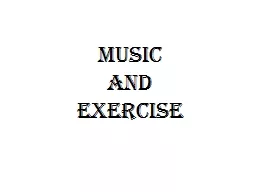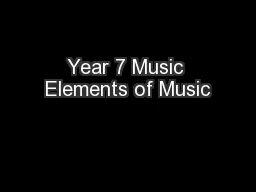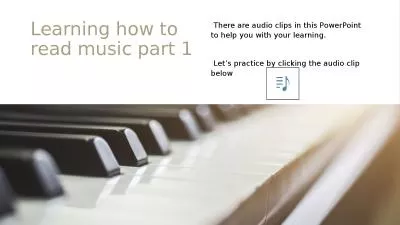PPT-Music Theory Chapter 1-Part 1
Author : min-jolicoeur | Published Date : 2019-11-28
Music Theory Chapter 1Part 1 APMT Hunter Mason Pitch Letter Names Musical notes are named with the first seven letters of the alphabet ABCDEFGA Pitch Class As the
Presentation Embed Code
Download Presentation
Download Presentation The PPT/PDF document "Music Theory Chapter 1-Part 1" is the property of its rightful owner. Permission is granted to download and print the materials on this website for personal, non-commercial use only, and to display it on your personal computer provided you do not modify the materials and that you retain all copyright notices contained in the materials. By downloading content from our website, you accept the terms of this agreement.
Music Theory Chapter 1-Part 1: Transcript
Download Rules Of Document
"Music Theory Chapter 1-Part 1"The content belongs to its owner. You may download and print it for personal use, without modification, and keep all copyright notices. By downloading, you agree to these terms.
Related Documents




